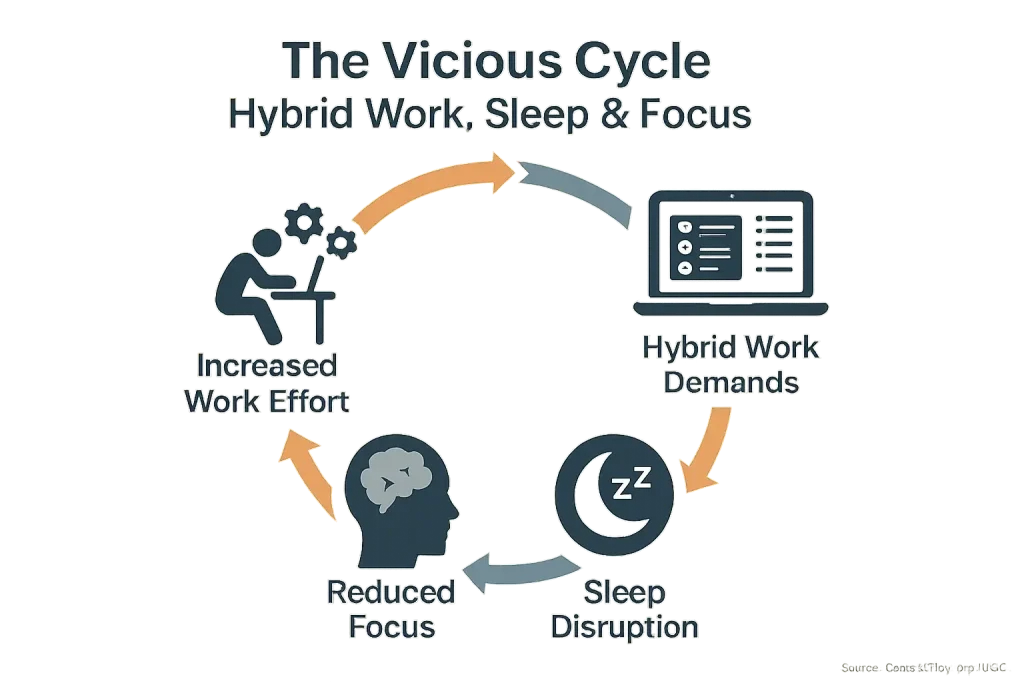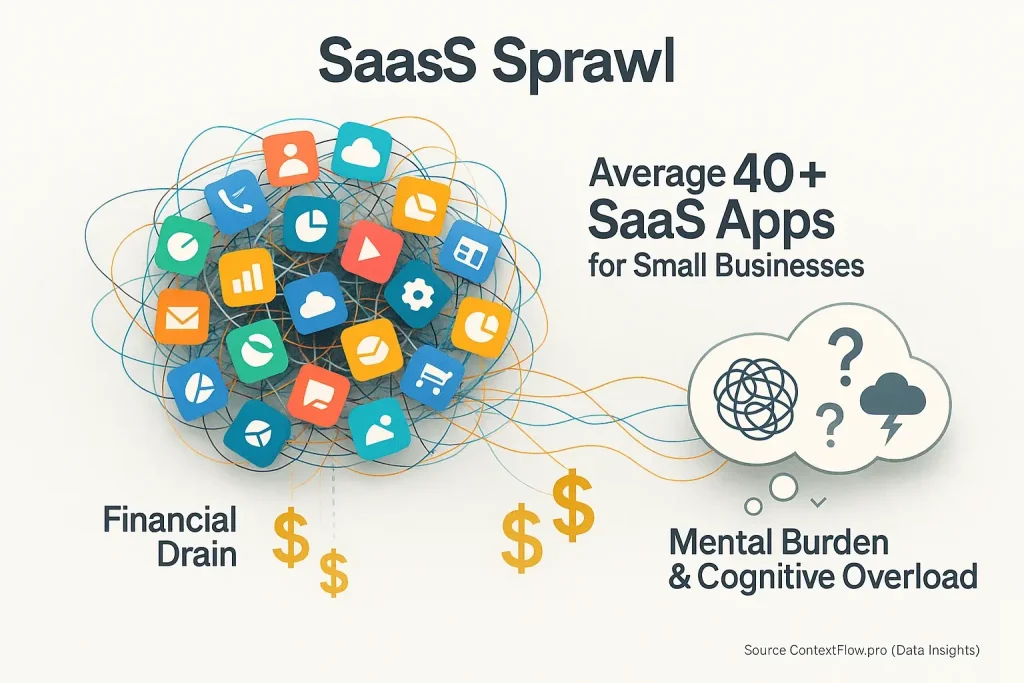The Open Source Promise: Is It the Hybrid Work Utopia Users Hope For?

Tired of endless subscription fees? Does rigid software frustrate your hybrid team? Open source hybrid work tools often emerge as a compelling alternative. They promise freedom. They suggest significant savings. But is this the hybrid work utopia many users truly hope for? Our analysis of extensive user discussions reveals a more complex reality than simple marketing suggests for hybrid work productivity.
Many professionals initially explore open source software alternatives. The primary motivation? Cost savings. "Free" tools hold undeniable appeal for budget-conscious teams and managers. Beyond price, the promise of greater control and customization frequently draws users. User perspectives consistently highlight desires to tailor tools perfectly, adapting them to unique hybrid workflows, rather than adapting workflows to tool limitations.
The journey with open source, however, can be unpredictable. Our deep dive into thousands of user experiences reveals a significant gap. This gap often exists between initial, hopeful expectations and the lived realities of daily use. While open source tools undeniably offer compelling advantages for hybrid work productivity, they also present distinct challenges. These challenges, frequently detailed in professional community feedback, often catch even tech-savvy users and their teams off guard, impacting overall context flow and workflow integration.
The Upside: Where Open Source Truly Delivers for Hybrid Teams (User Wins)
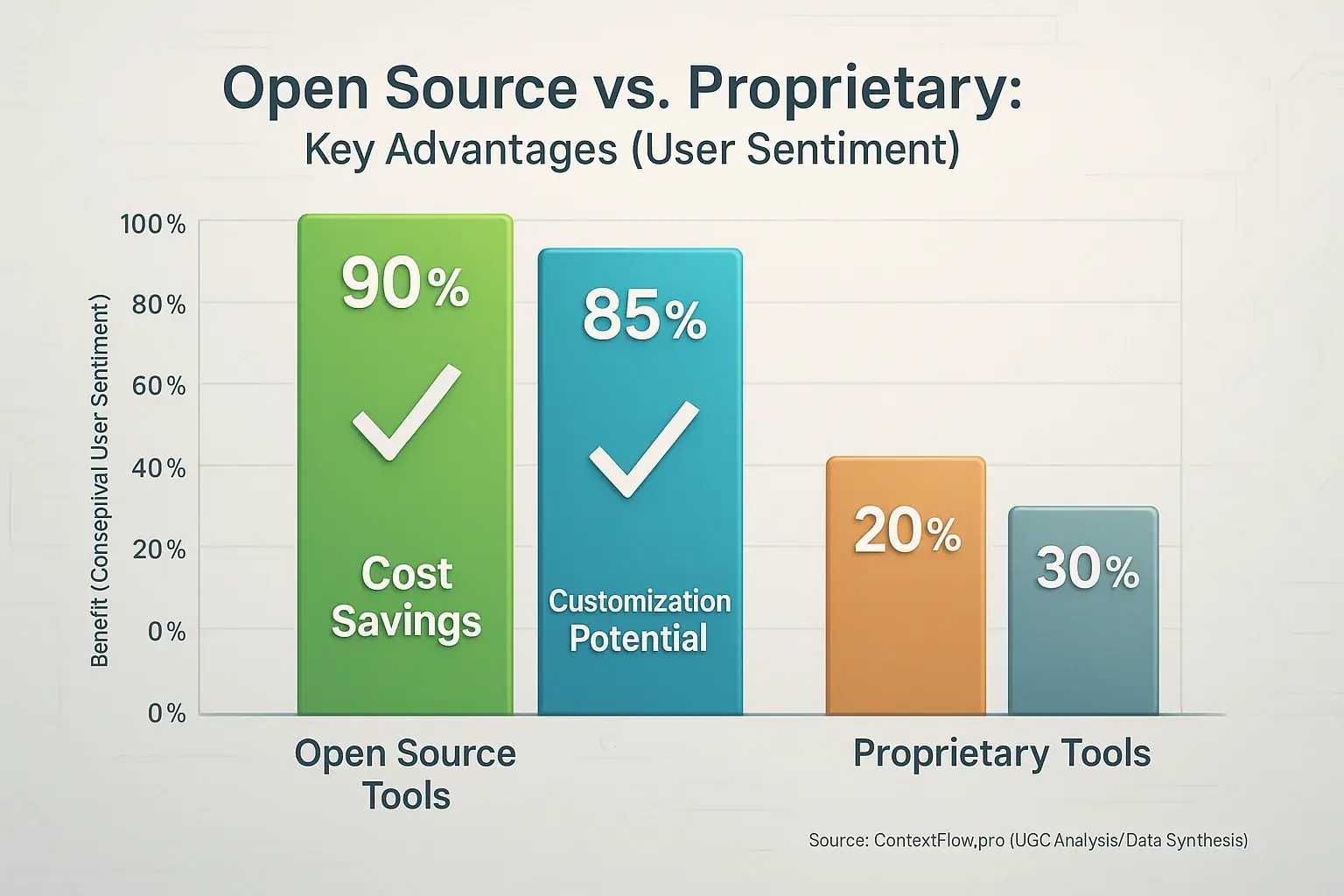
Let's be honest. The biggest draw users report? The price tag. Often zero. This is not just about saving a few dollars; it is about freeing up significant budget. Teams redirect those funds. Small businesses particularly celebrate this. Imagine a growing marketing agency saving thousands yearly on project management software. That money now fuels critical team training. User communities consistently highlight this financial freedom as a game-changer.
Beyond pure cost, users consistently rave about customization power. Imagine. You shape a tool to your team's unique, sometimes quirky, hybrid rhythm. No more wrestling your vital processes into inflexible off-the-shelf software. That is the freedom open source delivers. We see users, for instance, modify a shared task board. They integrate custom fields to track physical asset handoffs alongside digital progress. This directly solves a specific hybrid workflow friction point, a win many proprietary tools cannot easily offer.
The community aspect? It is a massive, often underestimated, strength. This might sound counter-intuitive for software that is frequently free. Yet, users frequently report rapid solutions from these communities. Need a fix for a very specific hybrid integration glitch? Someone in the user or developer community has likely tackled it. They often share detailed guides or code snippets. It becomes a vibrant, collaborative problem-solving hub. That shared knowledge, accessible and practical, is invaluable for hybrid teams navigating new challenges.
The Downside: Where Open Source Can Create New Headaches for Hybrid Teams (User Challenges)
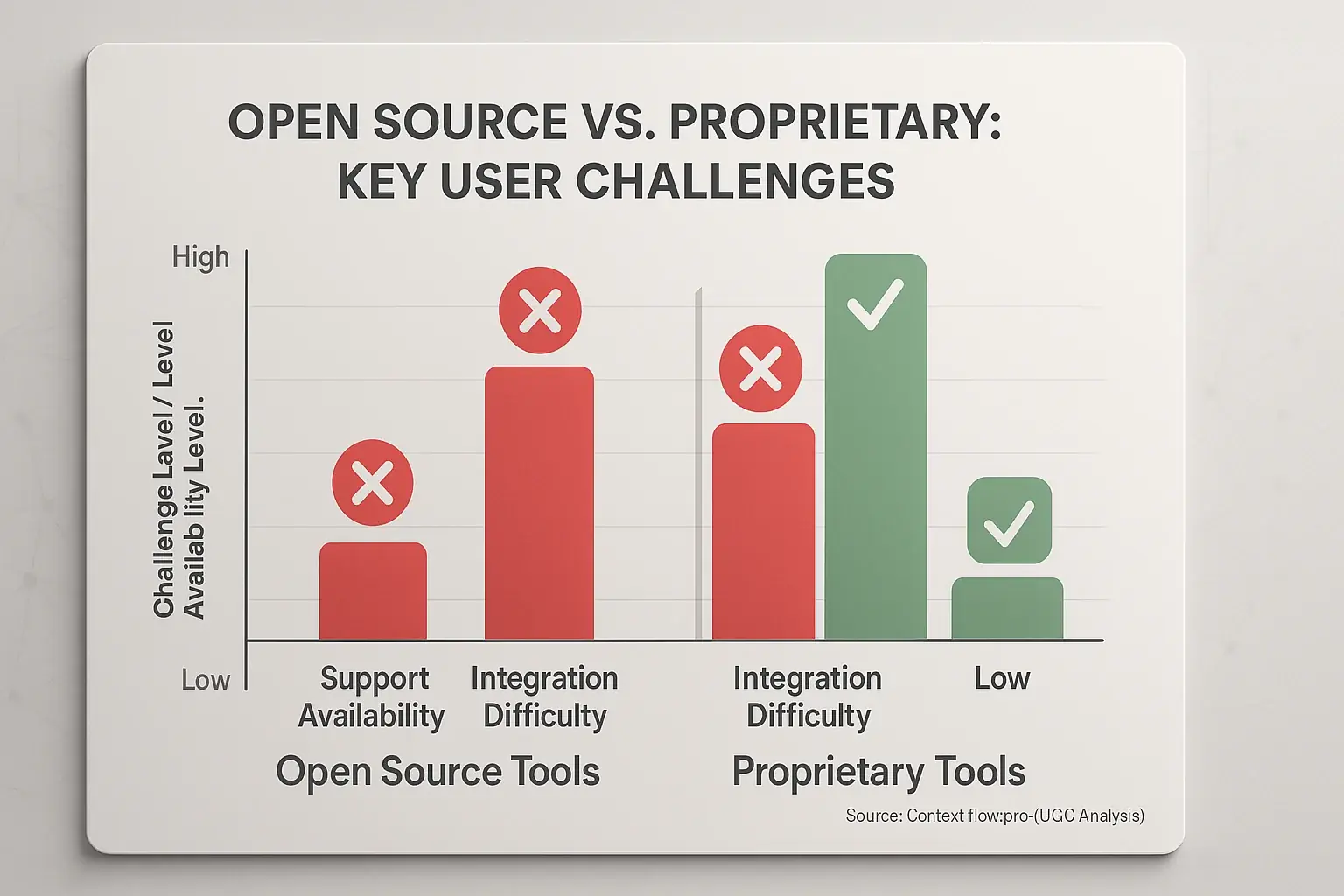
The 'free' allure of open source tools often hides a steep price: support. When a critical system falters, no dedicated 24/7 helpline typically exists for these options. Countless users describe hours spent scouring forums. They report digging through often-outdated documentation. Many find themselves relying on the sporadic goodwill of online strangers. This self-service model becomes a major productivity killer, especially when a pressing bug offers no immediate user-found solution.
Security concerns also emerge, a frequent topic in user discussions. Open source code can be exceptionally secure. True. However, our UGC analysis shows it consistently demands greater vigilance from the adopting team. Users acknowledge they are responsible for diligent updates. They must manage patches carefully. Verifying code integrity becomes their task. For numerous hybrid teams, this creates a significant, often underestimated, operational overhead they may not be equipped to handle without dedicated IT security expertise.
Another widespread headache users report involves integration complexities. Getting open source tools to communicate smoothly with an organization's existing proprietary software often proves difficult. Many community members find that while custom integrations are possible, they usually require specific coding skills. A deep understanding of APIs is frequently cited by users as essential. This reality means it is not always a simple plug-and-play experience, leading to the 'integration nightmares' many users recount, consuming valuable time and technical resources that could be focused elsewhere.
Finally, the very nature of some open source projects introduces uncertainty. Users sometimes discover a tool lacks a clear development roadmap. Key features might remain unaddressed. In worst-case scenarios, projects get abandoned by developers. This leaves hybrid teams reliant on unsupported software, a risky proposition for business-critical workflows. The initial appeal can fade quickly when long-term stability is questioned.
The Real Truth: Open Source Success Hinges on Your Team's Technical Comfort (Not Just Cost)
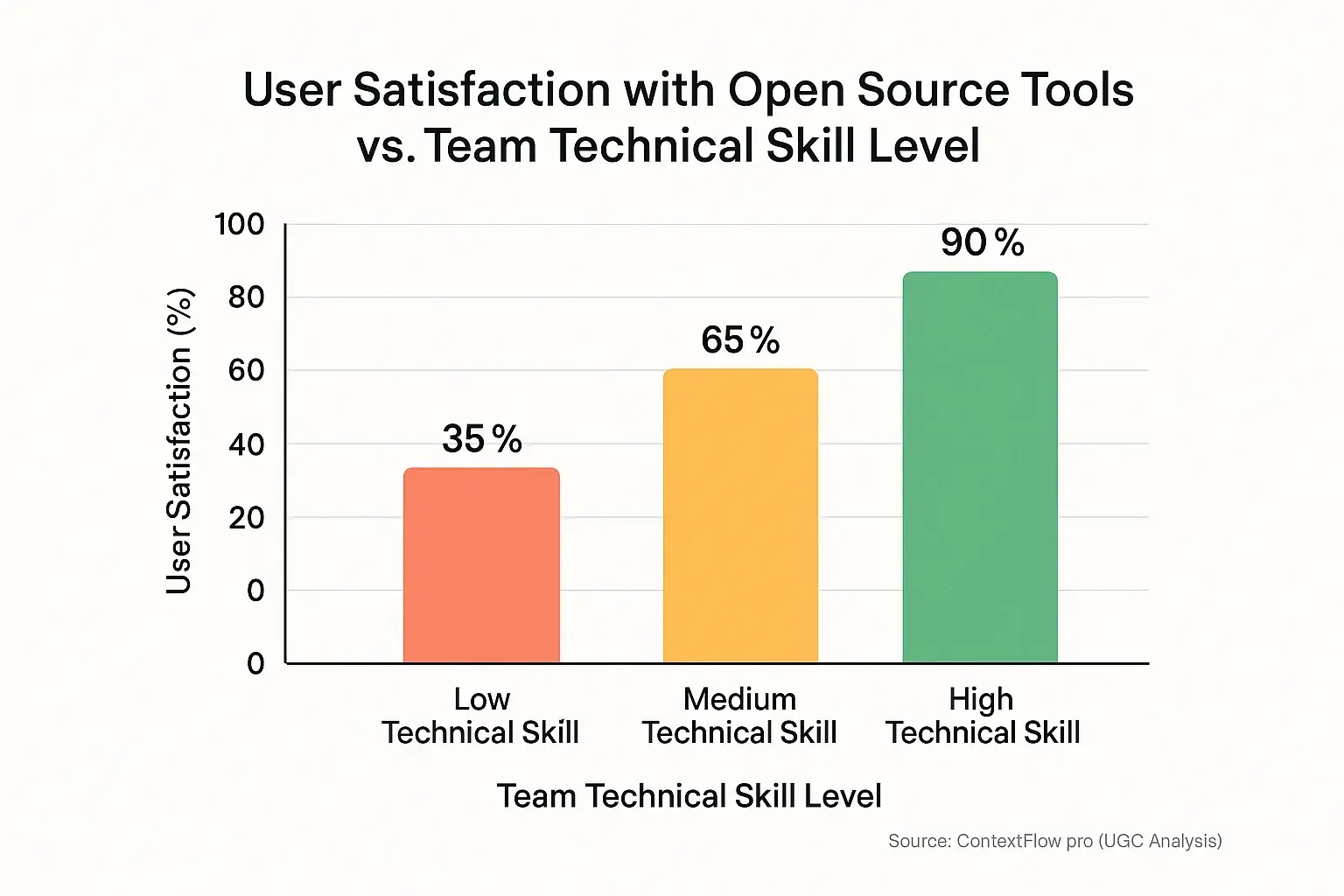
Here's the kicker many users discover too late: open source isn't just about the software. It's about your team's comfort level with managing it. That 'free' tool demands a different kind of investment. This investment includes time, technical skill, and a willingness to get your hands dirty. This reality is a crucial check for many organizations considering open source solutions for hybrid work.
Our analysis of user experiences highlights a frequent pitfall. Teams, attracted by zero upfront software cost, adopt open source platforms. They soon find themselves mired in complex configuration challenges. Updates can introduce unforeseen compatibility issues. Reliance on community forums for support often means significant delays in resolving critical problems. What initially appeared as a cost saving rapidly transforms into a substantial productivity drain, a common blind spot for groups without deep technical resources.
Conversely, open source becomes a genuine powerhouse for technically proficient teams. These groups usually possess in-house developers or dedicated IT support staff. They skillfully leverage the inherent flexibility of open source tools. Custom integrations are built to precisely match their unique hybrid workflows. For these users, open source represents a distinct strategic advantage, empowering innovation rather than becoming a frustrating operational burden. Their success underscores the pivotal role of internal capabilities.
Is Open Source Right for Your Hybrid Team? A User-Centric Decision Guide

So, how do you decide if the open source path is truly right for your hybrid team? The choice hinges on a few critical questions. Teams often overlook these. Free software tempts. Your unique situation dictates the best answer.
First, honestly assess your team's technical comfort. Does your team include individuals who can troubleshoot problems proficiently? Can they configure systems or even tweak code when necessary? Many users report that without this internal expertise, a "free" tool quickly becomes a source of frustration. Lost productivity is a common consequence.
Next, look beyond any initial cost benefits. Consider the long-term commitment. Updates require consistent management. Security patches are essential. This ongoing work is often underestimated by teams new to open source.
Then, carefully evaluate your integration requirements for hybrid workflows. Custom open source solutions can be powerful. They also demand significant, sustained effort from your team. Are you truly prepared for this ongoing management burden? Some teams find a supported commercial tool ultimately saves more time and precious mental energy.





